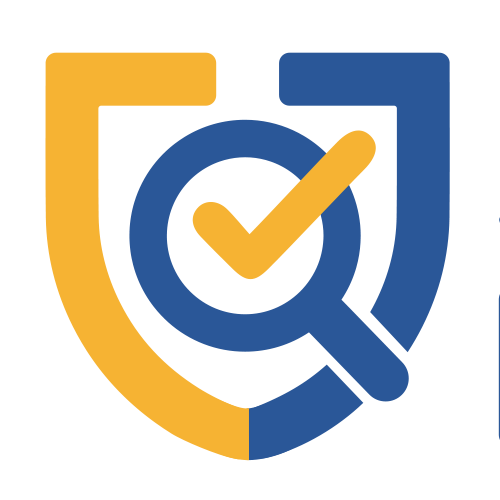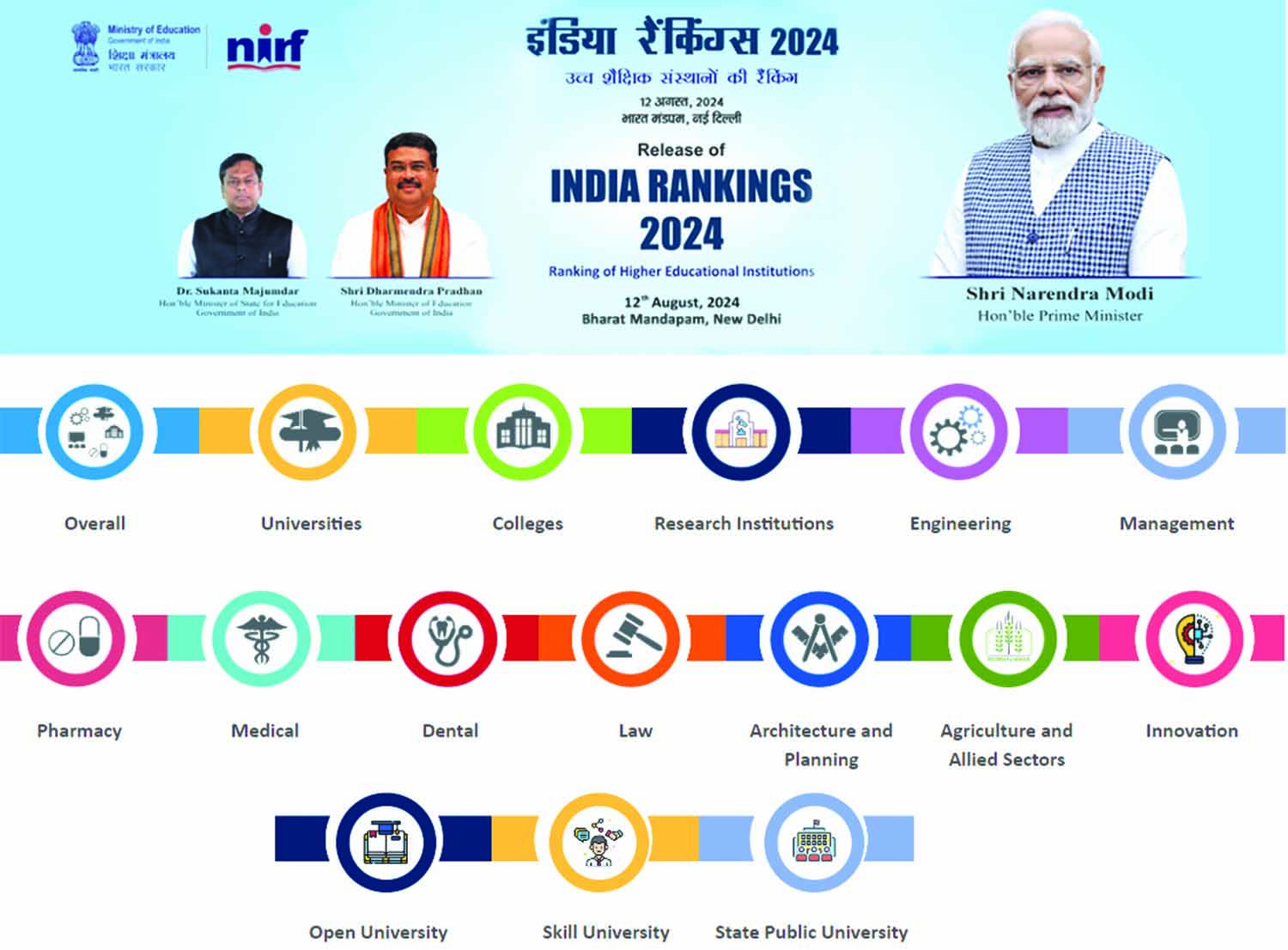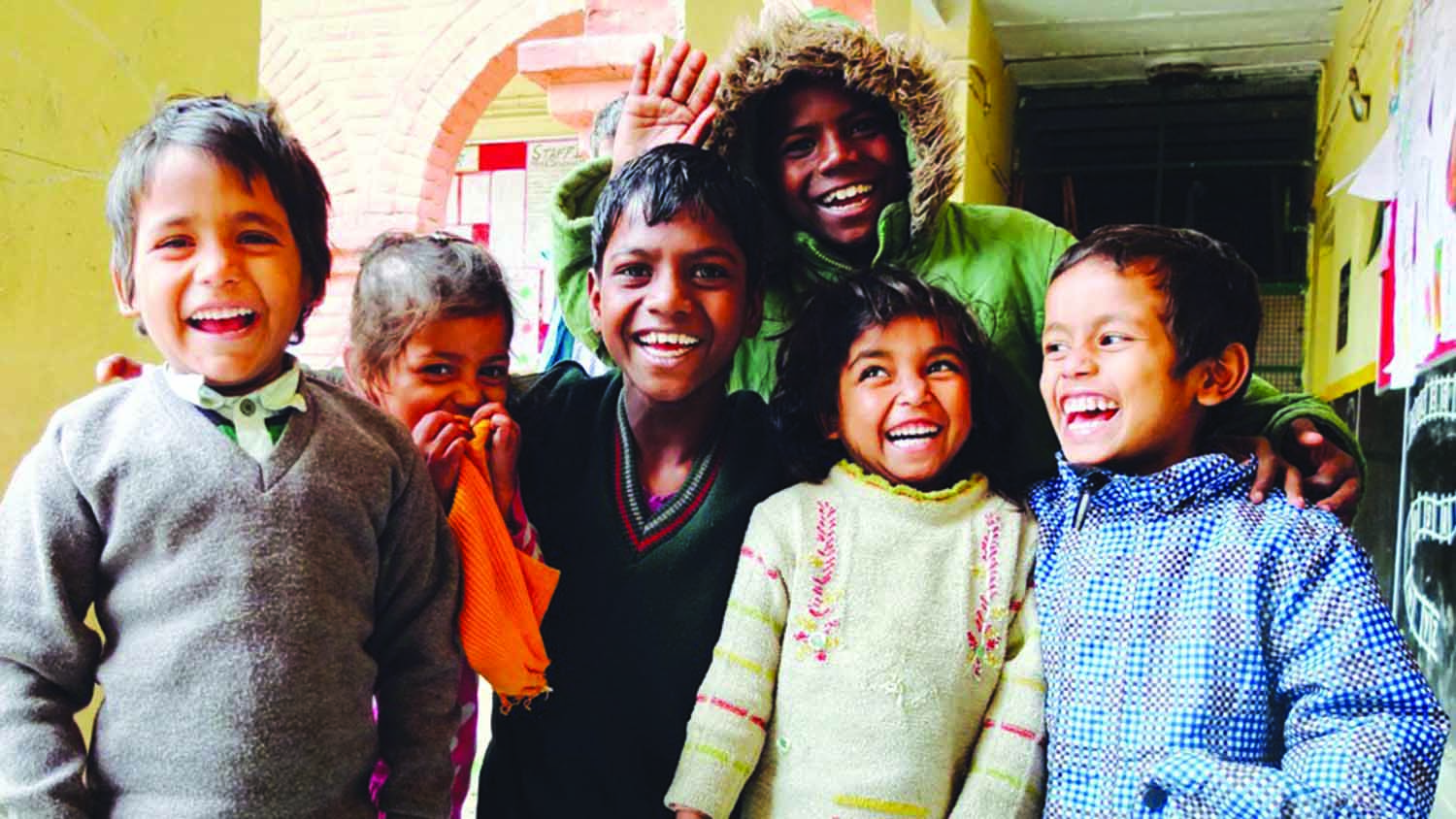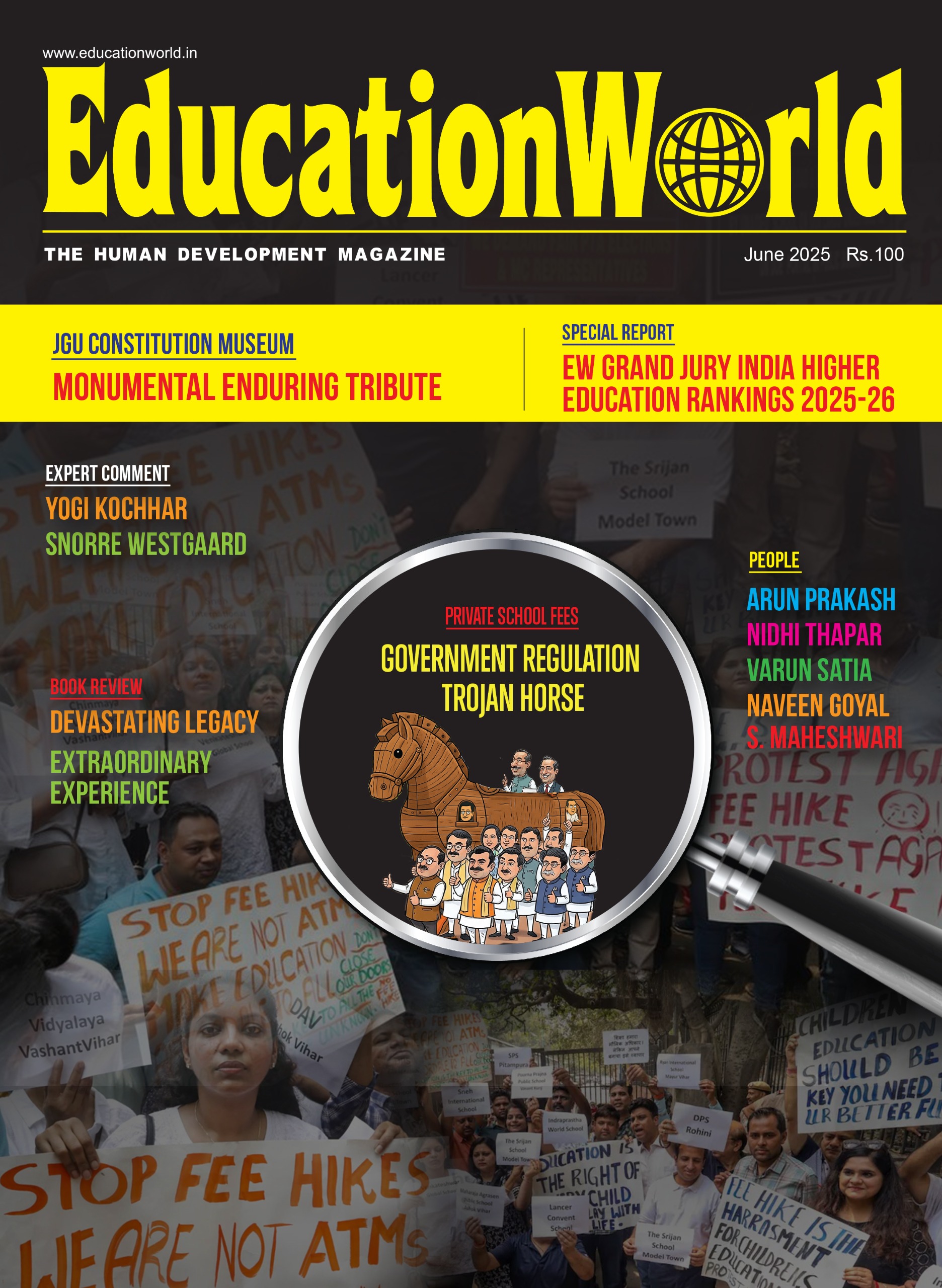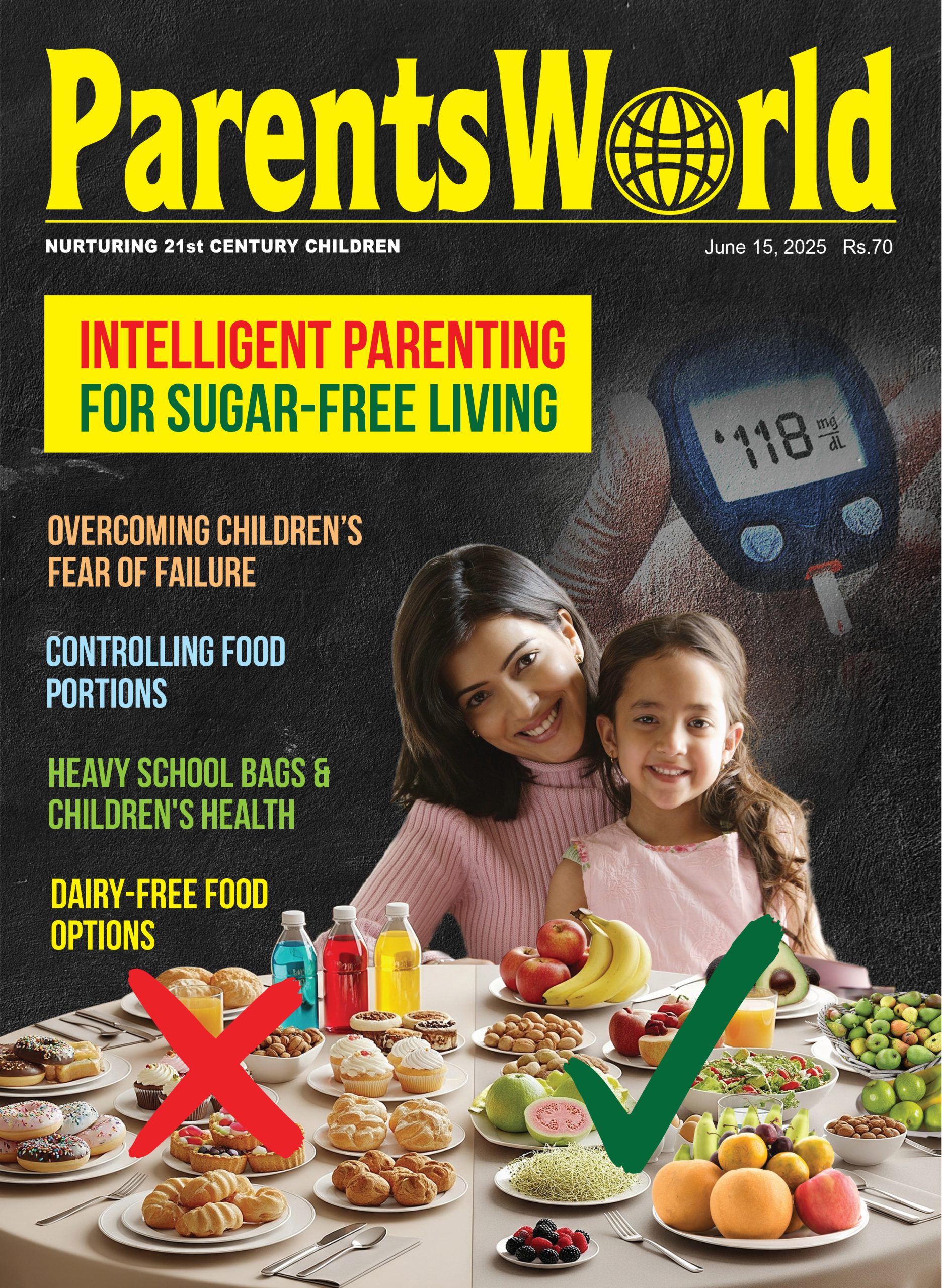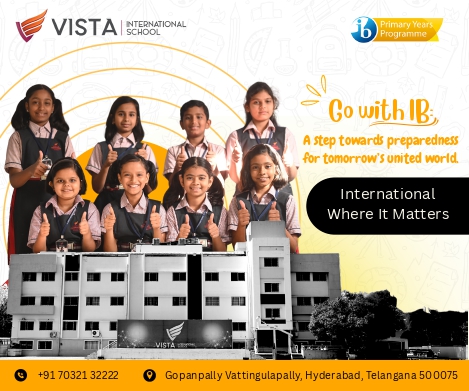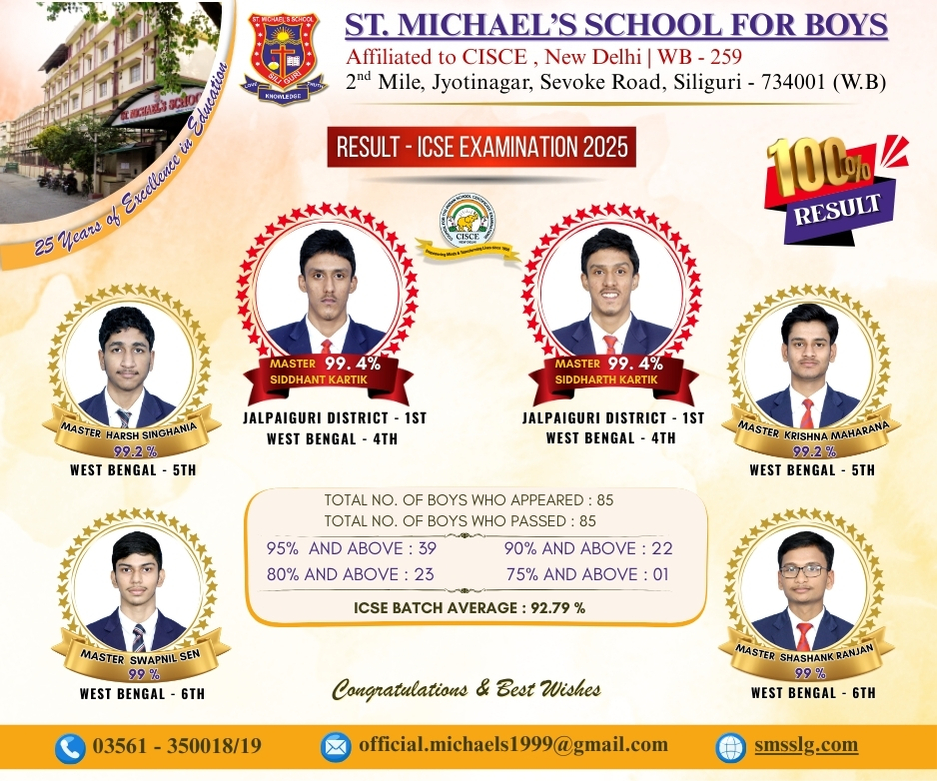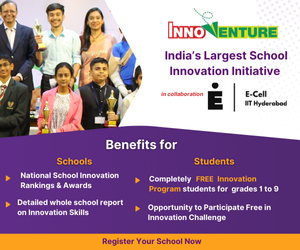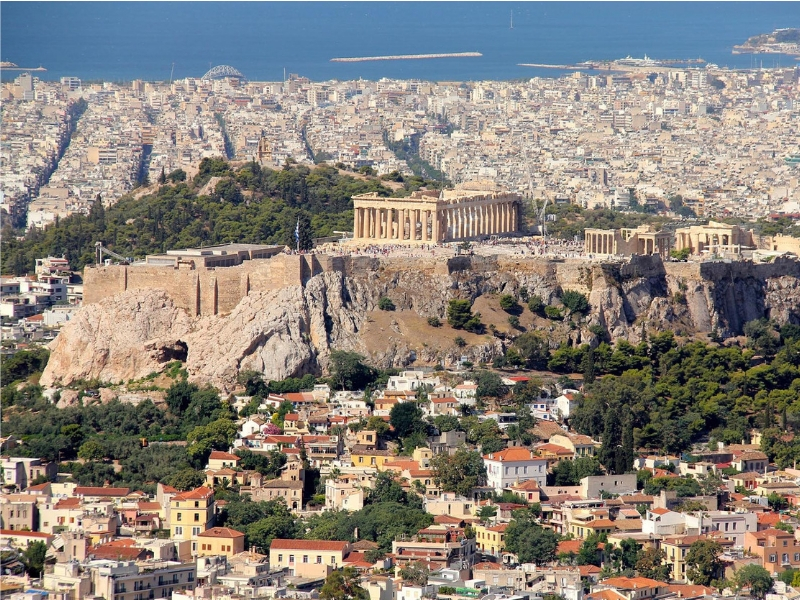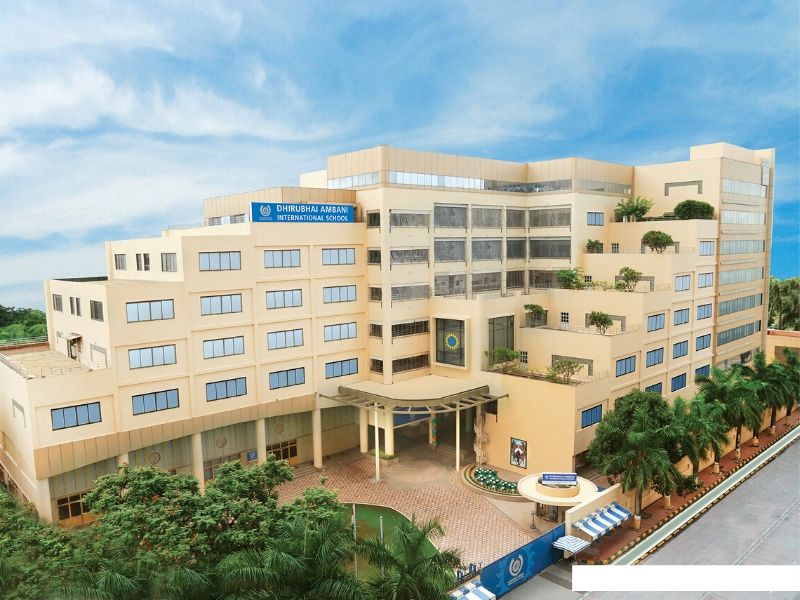Ditsa Bhattacharya (Delhi)
The ninth edition of the nirf (National Institutional Ranking Framework) 2024 released by the Union education ministry on August 12 has generated considerable excitement in some higher education institutions (HEIs), especially government colleges and universities. Several low-profile universities which have been awarded high rank in NIRF 2024, have gone to town with expensive full-page ads in national dailies.
This year, a total of 6,500 HEIs submitted data to the Union education ministry to be ranked in NIRF 2024. All of them submitted data in prescribed formats to become eligible for inclusion in NIRF’s ‘overall’ Top 100 league table and in each category — colleges, universities, research, engineering and business management.
They were assessed under five broad parameters — teaching, learning and resources; research and professional practice; graduation outcomes; outreach and inclusivity and public perception — with institutions in each discipline required to submit documentary evidence of academic progress. A notable feature of the annual NIRF is that participation and submission of data in the prescribed format is voluntary. Most new genre private universities top ranked in the annual EducationWorld and India Today league tables did not participate.
Undoubtedly NIRF 2024 is detailed and elaborate and considerable effort has been invested by NBA (National Board of Accreditation), a unit of AICTE (All India Council for Technical Education), a subsidiary of the Union education ministry, which has assessed the data and finalised the rankings. However the NIRF league tables have not resonated with the public because it is patently prejudiced in favour of government HEIs, and biased against private institutions which dominate higher education and provide good, bad and indifferent learning to 70 percent of the country’s 43 million youth in higher education.
The Top 17 HEIs in the Overall Top 100 category are government promoted/funded institutions headed by five IITs and Indian Institute of Science (IISc), Bengaluru. The private sector Birla Institute of Technology & Science, Pilani (BITS-Pilani, estb.1964), commonly accepted as the equivalent of the top IITs and whose alumni include former IISc director Goverdhan Mehta, Sabeer Bhatia, co-founder of Hotmail, is ranked a lowly #23. The unfancied private sector Amrita School of Engineering (#18) and Savita School of Engineering (22) are ranked above it. Even in the engineering category, BITS-Pilani is ranked #20 following all IITs as also Jadavpur University (12) and S.R.M. Institute of Technology (13).
On the other hand, in the EducationWorld India Higher Education Rankings (EWIHER) 2024-25 — which excludes heavily subsidised government IITs and NITs — BITS-Pilani is ranked India’s #1 private engineering university. Moreover Amity University — India’s top-ranked private multi-disciplinary university (by EducationWorld and India Today) which has established campuses in 13 countries around the world and has an aggregate enrolment of 37,000 students — is ranked #49 in NIRF 2024.
The infirmity of the NIRF Rankings is that participation is voluntary — unlike in the EducationWorld, India Today and other media rankings which invoking the constitutional right to freedom of expression and right to evaluate institutions open to the public — rank all sufficiently well-known HEIs without inviting participation.
HEIs that participate in NIRF are obliged to submit dozens of data sets in prescribed formats for evaluation of the quality of their teaching, learning and research capabilities. The identity of assessors is not known and although participating institutions are warned that the information submitted by them is subject to cross-checking and audit, the assessment process permits a high degree of subjectivity. Unsurprisingly, a large number of top-ranked private HEIs — O.P. Jindal and Ashoka universities, Indian School of Business, Hyderabad among others — don’t bother to participate in this official annual rankings exercise because of a widespread belief that NIRF is heavily biased in favour of government HEIs.
“The NIRF Rankings are not credible because it is essentially a self-assessment exercise. Participating HEIs routinely over-claim their achievements of which there’s at best a cursory if any, audit. Like the world’s most respected university rankings conducted by globally reputed agencies such as QS and Times Higher Education, the EducationWorld rankings of higher ed institutions are based on the perceptions of several thousand knowledgeable sample respondents including vice chancellors, faculty, and industry leaders mixed with objective research and publications data,” says Shubra Mishra, promoter-director of AZ Research Partners, a highly respected Bengaluru-based market research firm.
In the EWIHER Rankings 2024-25, Amity University and BITS-Pilani topped the private multidisciplinary and engineering categories, and Delhi University and IISc, Bangalore, the government multi-disciplinary and engineering & technology categories (see https://www.educationworld.in/ewiher-top-300-universities-2023-24/). Field personnel of AZ Research Partners interviewed 2,100 higher education faculty and students countrywide to compile EWIHER 2024-25. Take your pick.
Special Correspondent (Delhi)
Although s.12 (1) (c) of the landmark Right of Children to Free & Compulsory Education (RTE) Act, 2009, which mandates all private schools countrywide to admit children from poor households in their neighbourhood into class I and retain them free-of-charge until class VIII became law in 2010, this provision has not been implemented by a large number of the country’s estimated 450,000 private schools. Even after in Unaided Schools of Rajasthan vs. Union of India & Anr (2012), a three-judge bench of the Supreme Court by a 2:1 majority upheld the constitutional validity of s.12 (1) (c) while exempting minority and boarding schools from complying with it.
Private schools resent this mandate of the RTE Act as “partial backdoor nationalisation” of elementary (class I-VIII) education, especially since s.12 (2), which mandates (state) governments to reimburse private schools the cost of educating poor neighbourhood children on the basis of the average cost of educating children in government schools, has been casually followed by state governments.
In retrospect, it is clear the minority judgement of Justice Radhakrishnan who contended that the mandates of Articles 45 & 21 A of the Constitution, which prompted legislation of the RTE Act, required the State — not private school promoters — to provide free and compulsory education to all children, was correct. However this contention was overruled by Chief Justice Kapadia and Justice Swatanter Kumar who held that the said Articles did not specify “the manner” by which the State should universalise elementary education. The result of this ill-considered majority judgment is that the well-intentioned RTE Act has been bogged down in litigation.
Against this backdrop, on August 23, the Delhi High Court made a spirited attempt to give effect to s.12 (1) (c) by issuing several directions to ensure admission of children from the economically weaker section (EWS) and disadvantaged groups (DG) category in private unaided non-minority schools of Delhi state. Under the court’s order, 22 percent of seats in elementary classes should be reserved for EWS children and 3 percent for differently abled students.
The orders were issued by Justice Swarna Kanta Sharma in Gunjan as Guardian of Pihu vs Govt of NCT of Delhi & Anr following the filing of eight writ petitions by ten petitioners, who cited difficulties encountered due to “technical issues” in getting their children admitted in private schools under s.12 (1) (c).
Accepting the merit in the petitioners’ contentions, the court directed all private unaided schools in Delhi to appoint nodal officers to oversee the admission process of students under the EWS/DG category. It ordered nodal officers to serve as the primary point of contact for parents and guardians, ensuring the latter receive clear guidance and assistance throughout the admission process. It also stated that the information about the nodal officer, including his/her contact details and office hours should be prominently displayed at every school’s entrance and on their official websites. Moreover it also directed the schools to set up help desks within their premises to aid/advise parents of EWS/DG category students on the admission process.
However according to Bharat Arora, President of the Action Committee of Private Unaided Schools of Delhi, the issue of admitting EWS children in schools has arisen because of a misinterpretation of s.12 (1) (c) by the state government’s Directorate of Education. DoE determines the number of seats available in classes I-VIII whereas s.12 (1) (c) mandates that 25 percent of children admitted, should be from neighbourhood EWS households. “This DoE misinterpretation of s. 12 (1) (c) necessitates admission of a larger number of EWS/DG students than the prescribed 25 percent of children actually admitted. This adversely affects the financial health of private unaided schools,” says Arora.
Criticising the reluctance of private schools to abide by mandates of the RTE Act and s.12 (1) (c) in particular, Justice Sharma observed: “We must not allow children or their families from disadvantaged groups to accept inequalities in education as their social or natural fate.”
Following the court’s order to appoint nodal officers in all private unaided schools, a precedent has been set. The hope among educationists is that this precedent will be followed by all private unaided schools to give effect to the RTE Act.
Curiously courts are silent about the duty of governments at the Centre and in the states to improve and upgrade the country’s 1.20 million government schools in which the majority of EWS household children are condemned to learn best as they can.
